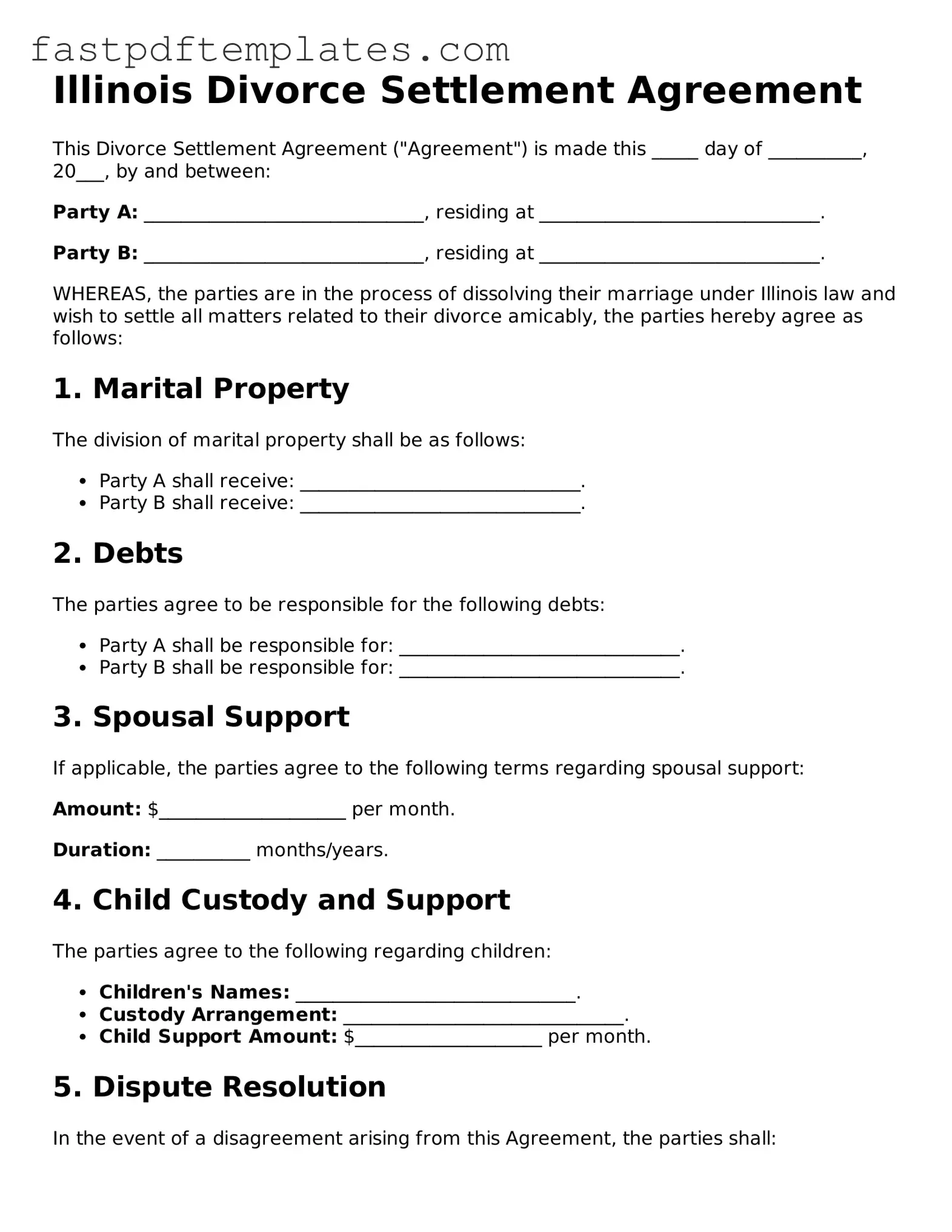Illinois Divorce Settlement Agreement
This Divorce Settlement Agreement ("Agreement") is made this _____ day of __________, 20___, by and between:
Party A: ______________________________, residing at ______________________________.
Party B: ______________________________, residing at ______________________________.
WHEREAS, the parties are in the process of dissolving their marriage under Illinois law and wish to settle all matters related to their divorce amicably, the parties hereby agree as follows:
1. Marital Property
The division of marital property shall be as follows:
- Party A shall receive: ______________________________.
- Party B shall receive: ______________________________.
2. Debts
The parties agree to be responsible for the following debts:
- Party A shall be responsible for: ______________________________.
- Party B shall be responsible for: ______________________________.
3. Spousal Support
If applicable, the parties agree to the following terms regarding spousal support:
Amount: $____________________ per month.
Duration: __________ months/years.
4. Child Custody and Support
The parties agree to the following regarding children:
- Children's Names: ______________________________.
- Custody Arrangement: ______________________________.
- Child Support Amount: $____________________ per month.
5. Dispute Resolution
In the event of a disagreement arising from this Agreement, the parties shall:
- First seek mediation services.
- If unresolved, the parties may proceed to arbitration or court.
6. Full Disclosure
Both parties acknowledge that they have provided complete and accurate information regarding their assets, liabilities, and financial positions.
7. Governing Law
This Agreement shall be governed by the laws of the State of Illinois.
8. Signatures
IN WITNESS WHEREOF, the parties have executed this Divorce Settlement Agreement on the date first above written.
__________________________
Party A
__________________________
Party B
__________________________
Date
